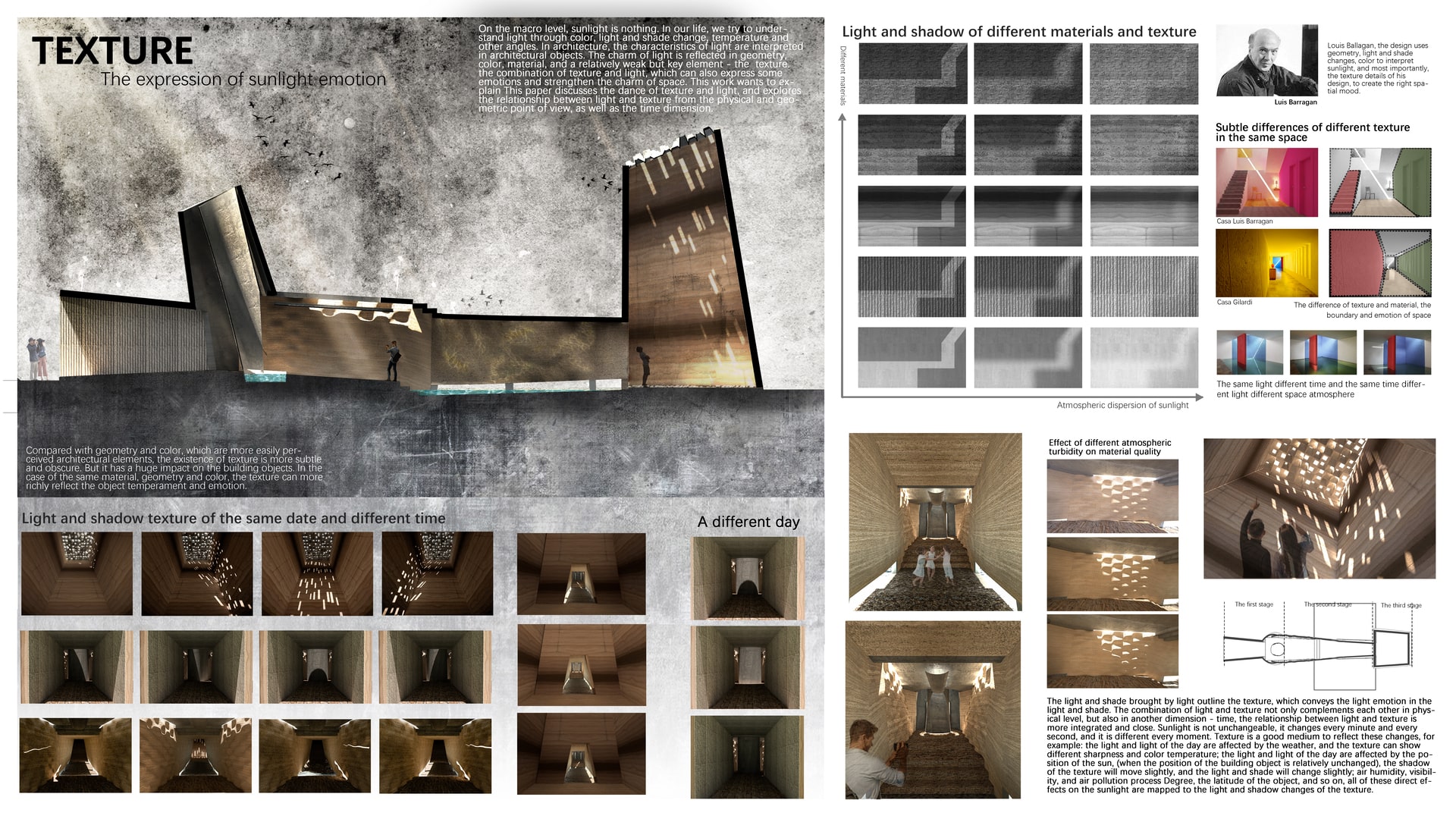Project Description
On the macro level, sunlight is nothing. In our life, we try to understand light through color, light and shade change, temperature and other angles. In architecture, the characteristics of light are interpreted in architectural objects. The charm of light is reflected in geometry, color, material, and a relatively weak but key element - the texture. the combination of texture and light, which can also express some emotions and strengthen the charm of space. This work wants to explain This paper discusses the dance of texture and light, and explores the relationship between light and texture from the physical and geometric point of view, as well as the time dimension. Compared with geometry and color, which are more easily perceived architectural elements, the existence of texture is more subtle and obscure. But it has a huge impact on the building objects. In the case of the same material, geometry and color, the texture can more richly reflect the object temperament and emotion. The light and shade brought by light outline the texture, which conveys the light emotion in the light and shade. The combination of light and texture not only complements each other in physical level, but also in another dimension - time, the relationship between light and texture is more integrated and close. Sunlight is not unchangeable, it changes every minute and every second, and it is different every moment. Texture is a good medium to reflect these changes, for example: the light and light of the day are affected by the weather, and the texture can show different sharpness and color temperature; the light and light of the day are affected by the position of the sun, (when the position of the building object is relatively unchanged), the shadow of the texture will move slightly, and the light and shade will change slightly; air humidity, visibility, and air pollution process Degree, the latitude of the object, and so on, all of these direct effects on the sunlight are mapped to the light and shadow changes of the texture. Based on the three stages of spatial spiritual perception, architecture can be divided into three chapters, from sensibility to rationality, and finally spiritual resonance. Through the collision and contrast between the rough texture of rammed earth and the delicate texture of fair faced concrete, the space deduction of direct light, reflected light and refracted light, and the combination of body texture and material texture. At the same time, the contact of space scale and material physical properties, these basic architectural techniques, strengthen the overall experience. Based on the study of the relationship between light and texture, this design constructs a building site, using light and texture to achieve emotional resonance.
